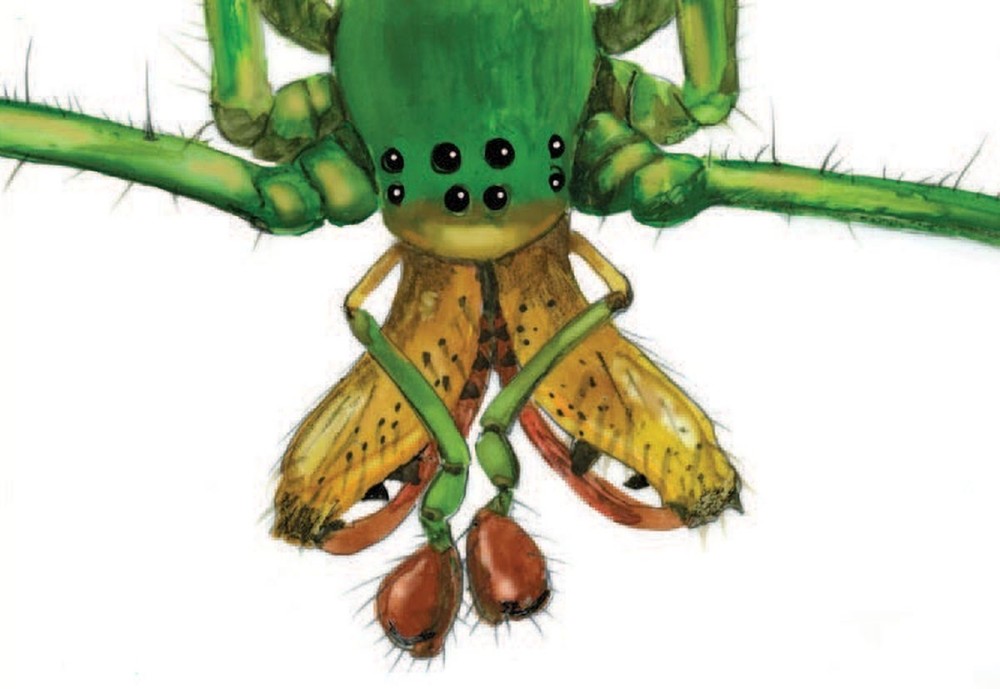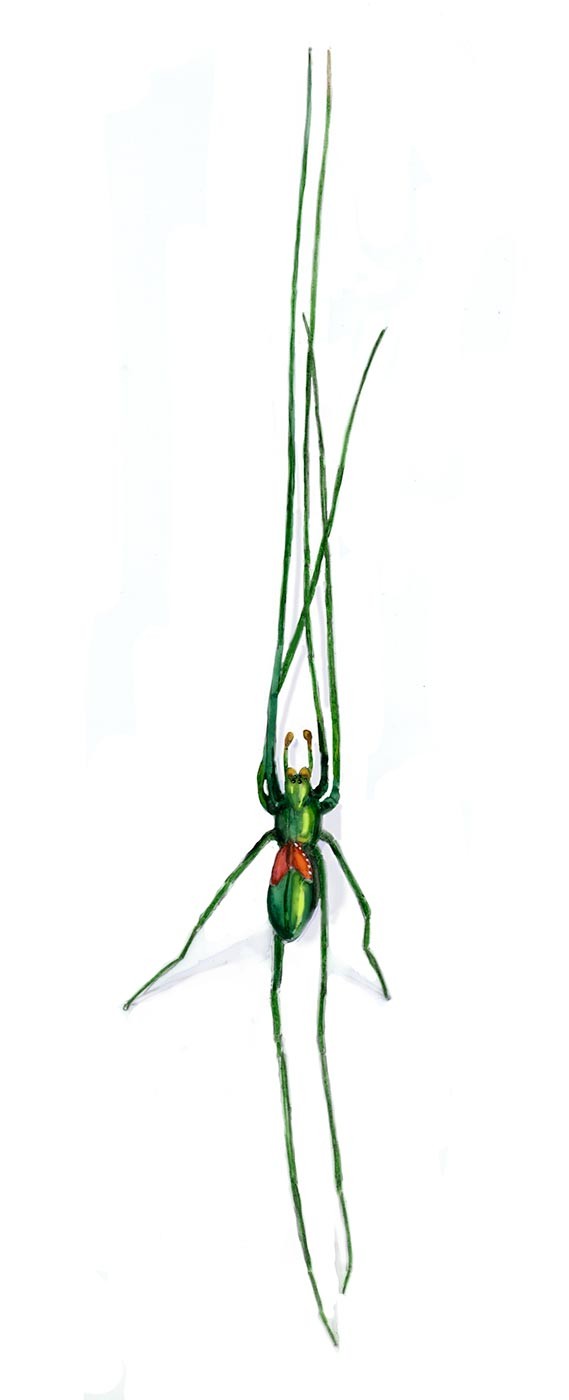
Winter rambles often take me to East Woods in South Burlington, Vermont. While birders gaze skyward, I find myself drawn to movement on the ground. Snow cover reduces invertebrate numbers, and those braving the cold move slowly. They also stand out from the background, making detailed observations and photography easier.
On one trip I was fortunate to see some interesting spiders, including some with bright green coloration. Lacking an identification app or other resource, I photographed as many as I could. Once home, I learned that I had encountered long-jawed spiders in the family Tetragnathidae.
Long-jawed spiders are orb weavers with long legs that extend straight ahead and behind when at rest. This habit, together with the spiders’ long jaws and bodies, makes for a twiglike appearance that earns them a second moniker: “stretch spiders.” Subtle stripes complete their camouflage, allowing them to blend seamlessly with twigs and grass blades.
One species takes camouflage a step further. The green long-jawed spider (Tetragnatha viridis), one of the spiders I encountered in East Woods, favors conifers including pines and hemlocks. Brilliant green coloration with a touch of red renders these spiders nearly invisible among needles in their preferred habitat. When they’re crawling over snow, however, the color contrast is sharp and may explain why they are the most commonly recorded spider in iNaturalist’s Arthropods on Snow project.
In fact, green long-jawed spider records in the project are exceeded only by observations of springtails, which are more commonly known as “snow fleas” (class Collembola). There is an important relationship between green long-jawed spiders and these tiny insects. Snow fleas make up the bulk of the spiders’ winter diet.
As with most predator–prey relationships, we should expect predators to be less common than their prey, especially when there’s a significant difference in size. Winter observations on iNaturalist confirm this with 1,040 snow flea records for New England and 388 long-jawed spiders. But the numbers tell only part of the story. Snow flea observations often included dozens to thousands of individuals peppering the snow, evidence of very large populations. By contrast, the spiders were recorded as solitary individuals.
In light of spider biology, these community science observations make perfect sense. Being solitary is less hazardous for spiders because it reduces the chances of becoming the meal in a cannibalistic feast! Adult long-jawed spiders are found in June and July, so any we see in winter are juvenile and too young for the dating scene.
Another curious feature of the biology of these spiders is the impressive mouthparts that inspired their common name. To appreciate the dramatic scale of their choppers, consider what a spider jaw typically looks like, and what we even mean by spider “jaws” to begin with.
Attached to a typical spider’s face are two pairs of appendages. The outer pair, called pedipalps, resemble legs in miniature; tarantulas actually use them as an additional pair of walking legs. But in most spiders, pedipalps are tactile and function like insect antennae. Male spiders have swollen pedipalps that are used in reproduction; they sometimes resemble a pair of boxing gloves. In long-jawed spiders, male pedipalps are far longer than those of females, for the reason described below.
The second pair of appendages are called chelicerae, and each is equipped with a single fang. At rest, the fang folds back along the length of its chelicera like a penknife blade, but when fangs are needed, they flick out at right angles and work like a pair of pinchers to impale prey and to inject venom for quick immobilization. The chelicerae bring food close to the spider’s mouth, and they’re also often toothed in a way that allows for chewing. In combination with digestive enzymes, this chewing enables the spider to quickly liquify food for ingestion.
In the case of long-jawed spiders, the chelicerae are often longer than the cephalothorax, the body segment to which all eight legs are attached. The fangs are also impressively elongated. Thankfully, these spiders deploy their weapons only against other invertebrates.
During mating, long-jawed spiders clasp each other jaw-to-jaw in an embrace to rival anything on a romance novel cover. Perhaps it is important to the male to keep the female’s weaponized chelicerae occupied, lest he become her next meal? Science provides answers to what is happening in these spiders, but the why is less clear. For most spiders, a face-to-face embrace would actually prevent reproduction, but in long-jawed spiders, longer pedipalps in the males appear to facilitate access to the female’s genital opening on the underside of her abdomen.
While observing these spiders in most seasons is challenging, winter’s snow presents the perfect opportunity to view these little green beauties and their less showy brown cousins. And by all means snap a photo or two and document them on iNaturalist for posterity.


